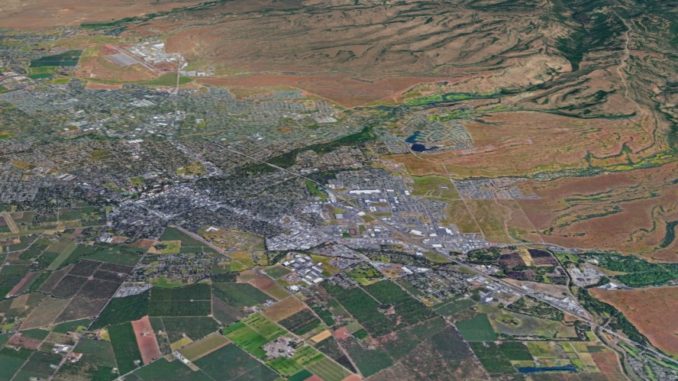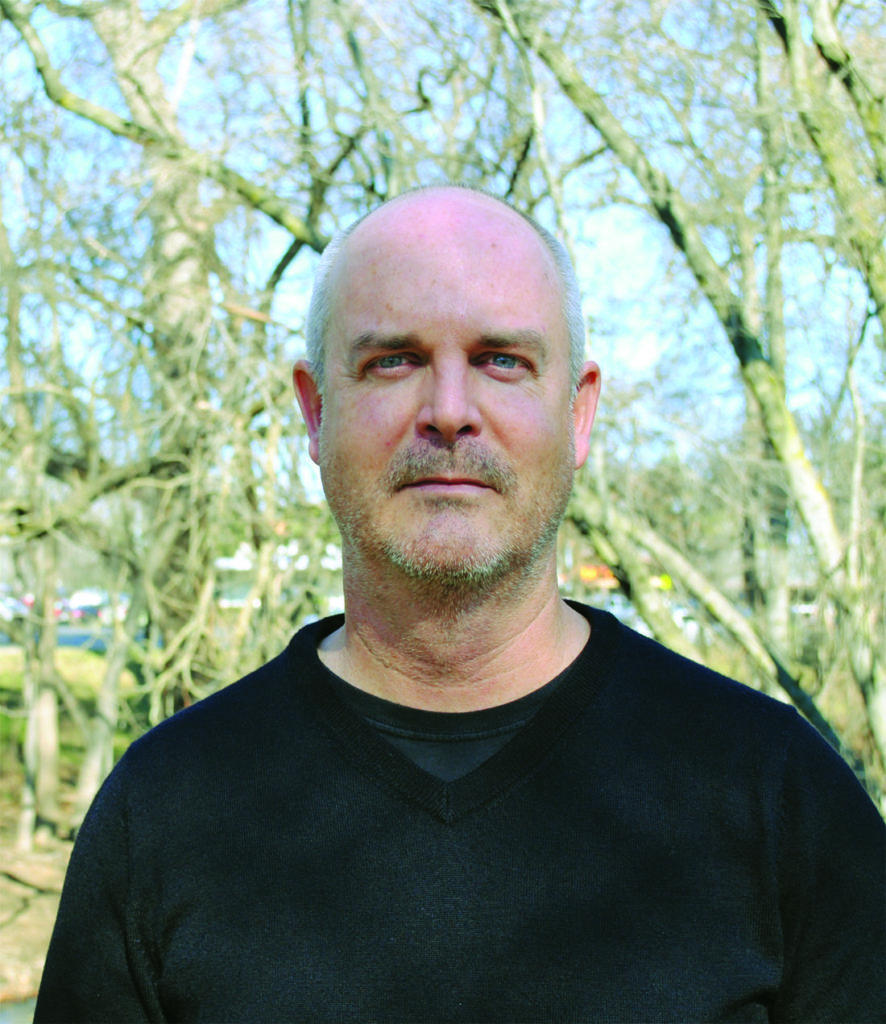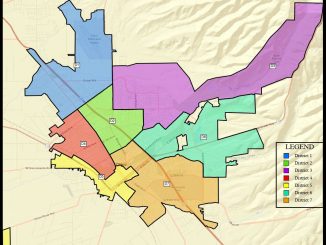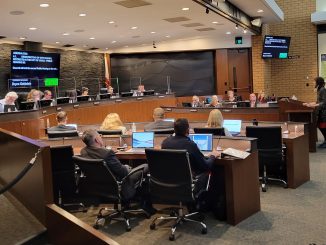
Chris Chaffee of Redistricting Partners, a consulting company hired by Butte County, didn’t mince words at a special meeting of the county Board of Supervisors on Tuesday (Nov. 22) focused on drawing district lines.
The two latest draft maps before the panel and the public were one presented by Chaffee’s firm (A6) and another drawn by Josh Cook (69836), Republican state Senator Brian Dahle’s chief of staff, which had been brought forward by Supervisor Doug Teeter.
Of the latter map, Chaffee, the firm’s chief operating officer, stated bluntly, “It’s a partisan gerrymander,” adding that it likely would violate California’s Fair And Inclusive Redistricting for Municipalities And Political Subdivisions (or Fair Maps) Act.
“The only thing it seems to do is create two agricultural districts on the west side,” he said.
Tensions were high in the chambers that day during the several hours long meeting. Supervisors made proposed changes to both maps—which were edited live by the consultant—and more than 20 public speakers showed up, most in favor of the A6 map presented by Redistricting Partners. Over 400 people submitted comments online as well. During the meeting, supervisors made jabs at one another, and members of the public called out from their seats in protest.
Ultimately, the conservative majority of the supervisors voted to completely scrap both maps. The panel also voted 3-2 —with Supervisors Debra Lucero and Tami Ritter dissenting—to have Redistricting Partners (which the county has paid about $80,000 for its consulting services) bring back several new map options that include the following criteria: the creation of two north and south “valley districts;” Chico districts split by considering Chico Unified School District lines; Oroville districts split by the Feather River; Cohasset included in a district with Forest Ranch (which may or may not be included with Paradise); the Oroville district north of the Feather River included in a district with Paradise; the Paradise district be underpopulated due to the Camp Fire; and the ancestral lands of the Mechoopda Indian Tribe of Chico Rancheria to remain united in one district.
Any new maps will be made publicly available three days before the board’s next meeting on Dec. 6, at which they will be discussed. Any changes to maps at that meeting will then be published for the public to review by Dec. 10, with the supervisors making their final decisions at the Dec. 14 board meeting, one day ahead of the deadline to complete the redistricting process.
There could be additional maps presented at the Dec. 6 meeting, too: Lucero confirmed with county legal counsel that she can bring forward another map for consideration as long as it meets the same public noticing guidelines and has at least one other supervisor’s support to agendize.
The Fair Maps Act, passed in 2019 and revised in 2020, establishes the criteria and procedures cities and counties must follow to adopt district area boundaries. It is the first time that the act is being applied statewide and has not yet been tested in court.
Chaffee explained on Tuesday that the law includes criteria that government agencies must meet “as much as practical,” including creating districts of equal size, keeping districts compact and considering communities of interest (i.e., “a population that shares common social or economic interests that should be included within a single supervisorial district for purposes of its effective and fair representation,” according to the Fair Maps Act).
There are two additional sections of the law that aren’t as flexible: Governments cannot treat an incumbent or candidate as a community of interest and cannot draw districts in order to advantage or disadvantage a political party.
It’s along these lines that Chaffee gave the supervisors his take on map 69836, which did not pass an analysis his firm conducted to test for gerrymandering, he said, and did not consider major communities of interest.

The A6 map for consideration by Redistricting Partners—which was supported by Lucero, Ritter and most of the public that spoke Tuesday—was presented as a better option by Chaffee, who reported that it follows the almost unanimous community of interest testimony received since last week. It creates two compact urban Chico districts, unites Cohasset with Forest Ranch in the foothills district, unites Mechoopda lands, keeps Berry Creek with Oroville and minimally splits the City of Oroville.
In response, Supervisor Tod Kimmelshue proposed amendments to 69836 to make it “more acceptable” by meeting some of those communities of interest criteria, such as keeping Mechoopda ancestral lands within one district and Cohasset within the foothills district.
“I’m trying to work together to come up with something we can all kinda live with,” he said. “I think it’s important that we make some adjustments to these maps.”
Chaffee was still wary of endorsing the map even after the changes, however.
“If it’s fruit from a poisonous tree, then it’s illegal,” he said.
Ritter then chimed in: “It’s basically lipstick on a pig. We can’t fix this because the way in which it was created is ultimately flawed.”
She also suggested amendments to the A6 map during the meeting.
Teeter, who made the motion to scrap the A6 map and the motion to create new ones, told attendees that when he brought up map 69836 at the panel’s previous meeting on Nov. 9, the intent was for Redistricting Partners to come back with an analysis of its issues because “I knew it was going to cause concern.”
In the wake of that meeting, Lucero and Ritter held a press conference last week at which they accused their colleagues of gerrymandering by supporting the review of map 69836, which they have argued violates the Fair Maps Act.
On Tuesday, Teeter said that the map he will support will look like map 69836.
“I get the poisoned fruit thing,” he said. “But we let the consultant’s pen go across it and then people can’t say this was part of [Cook’s map or the map edited by Kimmelshue].”
Lucero was openly frustrated by the proceedings. She questioned Teeter about his rationale for the valley districts, which Teeter said would create agricultural or rural districts. He then pointed to public testimony that supported the creation of two agricultural districts.
Butte County Farm Bureau Executive Director Colleen Cecil showed up Tuesday to speak in support of that map on behalf of the organization. Paradise Mayor Steve Crowder also spoke in support of 69836, which he argued would keep Paradise in a district with similar communities with the same needs. The A6 map includes a larger population from Chico in the Paradise district.
“This is huge for Paradise and the entire Ridge,” he said. “[The other map] would silence our voice as we would become lost in Chico.”
Lucero argued that her colleagues were throwing out the public process and justifying their decision by referring to a “handful of remarks” in favor of two western districts.
“We have had public testimony; we have gone through a public process,” she said. “If people have spoken and we just ignore it and it’s against the law, I think this is just folly.”
Board Chairman Bill Connelly responded that there were people within his district and other rural parts of the county who were not represented and that he didn’t realize he was “supposed to go out and do letter-writing campaigns to get people riled up.”
During public comment, two local attorneys warned the supervisors that if they moved forward with map 69836 or its amended version that they believed it would be illegal and the county would be sued.
Chico-based attorney Richard Harriman said no part of the Fair Maps Act states that “economic or employment status is a legal basis upon which to discriminate against urban residents and voters in Butte County or to gerrymander voting districts.”
Bryce Goldstein, member of the Chico Planning Commission, also spoke in support of the map A6 and its amended version.
“It follows the rules and it follows sensible boundaries,” she said, whereas 69836 splits Chico and Oroville apart more than necessary and splits apart college student housing and the foothills.
Next time, she added, the county should create a nonpartisan redistricting commission to oversee the process instead of bickering.
The next meeting on districting will be Dec. 6. Go to www.buttecounty.net/clerkoftheboard/boardmeetings for the agenda and public commenting information.




Be the first to comment